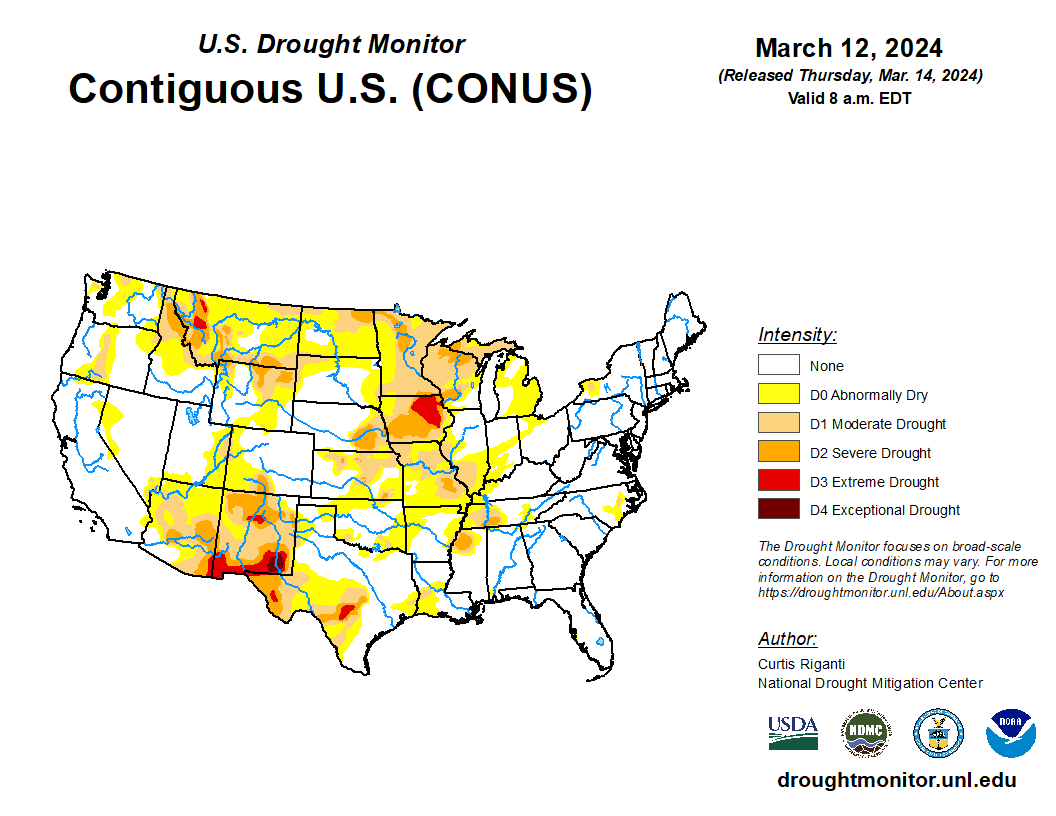U.S. Weather/Crop Progress
Highlights:
- In the West, cool but mostly dry weather has returned across the Great Basin and the Pacific Coast States. Meanwhile, patchy snow is developing across the northern and central Rockies and environs, signaling the arrival of a late-season winter storm.
- In the Plains states, rain showers are developing across western Nebraska and neighboring areas. The remainder of the region is experiencing dry weather.
- In the Corn Belt, temperatures remain at record-high levels for this time of year. With spring arriving early this year, dryness is becoming more apparent across the upper Midwest.
- In the South, warm, dry weather is promoting fieldwork, pasture growth, and winter grain development. Much of the South has recovered from last year’s punishing combination of heat and drought.
Outlook:
During the next 5 days, a complicated U.S. weather pattern will result in four primary concerns. In the West, a high-elevation snow event will unfold across Wyoming and the Four Corners States, with the most significant accumulations (locally up to 4 feet) expected on the eastern slopes of the central Rockies. Meanwhile, a stripe of precipitation—mostly rain—will stretch from the central High Plains to New England, although wet snow may fall in areas of the Plains adjacent to the central Rockies, as well as northern New England. In the South, a multi-day precipitation event should result in 1- to 3- inch rainfall totals, especially from eastern Texas to the southern Appalachians. Severe thunderstorms may accompany the Southern rain, with the severe-weather threat extending into the southern Corn Belt on Wednesday and Thursday. Finally, cold air trailing the stormy weather will begin to push southward during the weekend, with freezes expected early next week deep into the interior Southeast.
The NWS 6- to 10-day outlook for March 18 – 22 calls for the likelihood of below-normal temperatures across much of the eastern half of the U.S., while warmer-than-normal weather should prevail in parts of Maine, southern Florida, the central High Plains, and much of the West. Meanwhile, near- or above-normal precipitation across most of the country should contrast with drier-than-normal conditions in the Pacific Northwest and from the middle Mississippi Valley into the Northeast.

